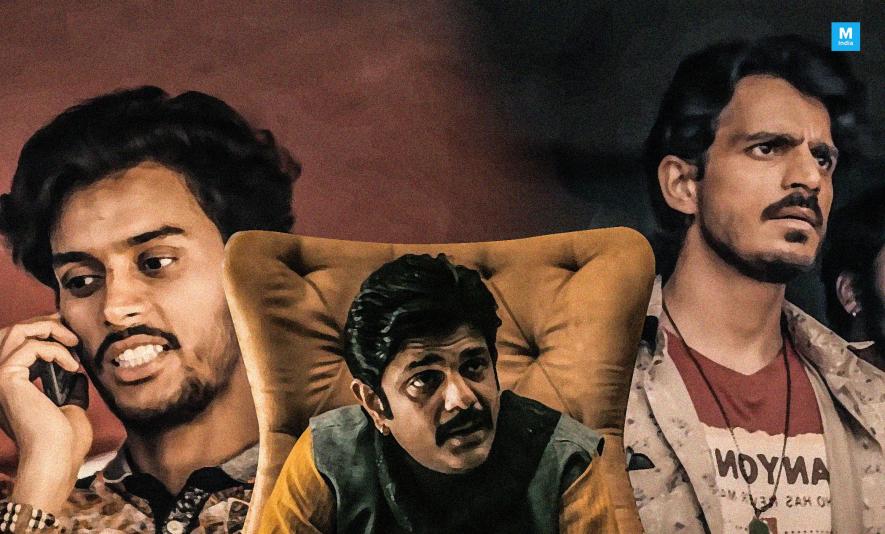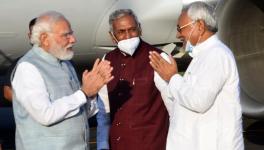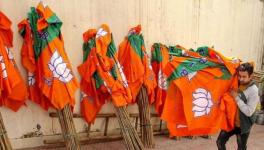Netflix India’s Jamtara: Old Wine in New Bottle

Jamtara, a quiet town in Jharkhand, was in the news during the state Assembly elections when the Chief Minister of Uttar Pradesh Yogi Adityanath attacked the Opposition candidate’s religious identity. Jamtara nevertheless elected the Muslim candidate, rejecting the communal politics of the BJP. The small town [the actual place is a notified city in official terms] is now the subject of a Netflix web series, titled Jamtara: Sabka Number Aayega, directed by Soumendra Padhi.
Its characters include underage school dropouts running a cyber-crime operation. The show delves into one possibility that can arise when unemployed youth in the digital age get access to the internet. Jamtara’s plot revolves around this group of unemployed youngsters, all school dropouts, who have learned to “dream big”, and who could not care less if they break the law. They are aspirational young men from a sleepy town, far distant from the Capital. They inhabit a region that would be characterised, in official parlance, as an ‘aspirational’ district—earlier known as ‘underdeveloped’ or, simply, ‘poor’. Yet when the young men start working on their dreams—to earn money and move up the social ladder—they come in confrontation with the local police and powerful local politicos.
‘Jamtara: Sabka Number Aayega’ or ‘everybody will get their chance’ says it all. The title reflects the aspirations of the varied characters in the series. It is also ironic, in that the modus operandi of the youngsters is to make victims of all—one by one. Led by Sunny Mondal and his cousin, ‘Rocky’ (played by Anshuman Pushkar), the group dupes people into revealing details of their bank accounts that should not be shared. The money they siphon off, using ‘phishing’ techniques, is used to purchase fancy bikes, snazzy sunglasses and fashionable clothes. The dream is to live it up and, if possible, immigrate “to Canada”.
The potboiler leads up to a new police officer, Dolly Sahu (played by Aksha Pardasany), breaking Jamtara’s status quo. She hires a “well-educated” cynic, a cyber-crimes expert (Saurav Sharma, played by Udit Arora), who starts dismantling the old criminal-police-politician nexus. Mondal (played by Sparsh Shrivastav) is the main protagonist in this drama. He takes his life of crime to next level and enrols a teacher, Gudiya, (played by Monika Panwar) and sets up a call centre where people are taught spoken English. Now they confront a remnant of the old power structure, the elite-caste legislator, Brijesh Bhan (played by Amit Sial).
The ten episodes of Jamtara explore the tragedy that has unfolded often on celluloid—the conflation of an idealist police officer, aspirational but amoral youth and a resistant, old, power structure.
If literature and cinema could hold a mirror to Jamtara’s society, its residents would see a world in transition. The narrative explores life in smaller towns, while languish on the margins of affluence and deprivation. The show, therefore, is accurately reflects life in India’s so-called tier-two and tier-three towns. Jamtara’s erstwhile affluent classes and members of its dominant castes have moved out from, leaving behind their “unfortunate” brethren. A new space is available for communities once curtailed or diminished by traditional hierarchies to find their own feet in their immediate, drastically-altered, social schema.
This transition is what the creators of Jamtara explore. It is well known that the abrupt introduction of a new technology in a society that is handicapped, both by its past and by its present—lack of digital education—can have huge consequences. Jamtara’s youth are a fine instance of the after-effects of creating digital haves and have-nots.
The very crime that is the theme of the series—“phishing”—preys upon the lack of digital education among users of the internet, who have, willy-nilly, adopted, or had to adopt, the use of the internet for banking and other critical services. A large section of Indian society, particularly the older generation, are potential victims of phishing because the innards of the digital world are not just mysterious but frankly appears mystical to them. The police and judiciary lag behind in legal knowledge and interpretation. The requisite training of police officials, in particular, to deal with cyber-crimes, has never been systematically undertaken.
In a dramatic twist, on 15 January, just as the Netflix series was beginning to get traction, The Hindu reported that a phishing racket has been busted in Mumbai whose absconding mastermind belongs to the Jamtara in real life.
Importantly, this new series peels open the vagaries of the caste reality of small-town India. In the last few years, the entertainment industry has been severely criticised, and rightly so, for featuring members of the established elite, who invariably belong to elite castes as well, in lead roles. Jamtara has, like many Netflix series, found new and raw actors who represent a more realistic social composition of the world they inhabit in the series. The main actors do not necessarily come from social groups that are considered the cream of society in the traditional Brahmanical hierarchy.
The show has also invited some serious criticism for the choice of words—a casteist slur from the mouth of one of its characters. It is important to note that Western cinema has a far greater social diversity than Indian cinema or entertainment. Hollywood is a little more democratic in the racial composition of its stars and actors as well, compared with Bollywood’s inclusion of region, caste, gender and other identities. Also, Jamtara includes characters from the non-elite castes, but the key actors and makers of the series do not, which complicates the issue of language and word choice.
Furthermore, the problem with particular words that operate as casteist slurs is not just that they are used as terms of abuse directed at any individual, but that an entire community is painted by the use of the word, which becomes a synonym for a community and subjects it to a highly negative portrayal. That community’s entire identity is subject to ridicule—a practice limited to depictions of non-elite sections of society, women, and so on. Therefore, even when used in creative expressions, slurs of any kind are problematic in the Indian context.
That said, the cinematography of Jamtara beautifully captures the dusky and smoky landscape of the town it is named after. It experiments with Gray-scale as well. Here and there, the statues of tribal heroes Sidu Murmu and Kanu Murmu, show up in the series. There are picturesque glimpses of blue doors and windows that adorn the mud walls of homes in semi-rural and rural India. The show deploys an important character who would feature in traditional drama, the vidushak (or joker-narrator). Two characters, featured as drunks, intersperse episodes with some dark humour that harks back to characters and tales from the Mahabharata.
Jamtara is old wine, but the bottle is more than brand new. The makers have changed the design of the bottle while delivering old wine.
If you can steal some time from your daily busy schedule and are looking for some desi flavour, Jamtara will not disappoint you.
The writer is a research scholar at JNU. The views are personal.
Get the latest reports & analysis with people's perspective on Protests, movements & deep analytical videos, discussions of the current affairs in your Telegram app. Subscribe to NewsClick's Telegram channel & get Real-Time updates on stories, as they get published on our website.






















